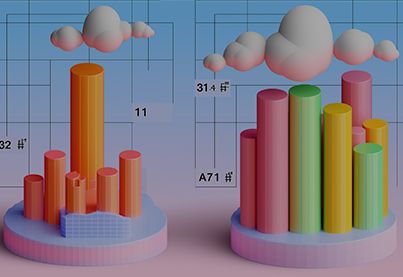How to keep track of procurement emissions targets

How to keep track of procurement emissions targets
Emission tracking and reporting is an increasingly important factor in procurement, as businesses move closer towards net zero targets and build sustainability criteria into supplier selection and management.
However, making lower carbon (CO2) decisions can be especially difficult for procurement professionals not traditionally trained in ESG standards and metrics. How do you track emissions to measure impact? How do you ensure you’re comparing like for like across suppliers? What kind of reduction is actually considered good?
You can only improve on what you can measure, which is why it’s so important to take the initial steps towards better tracking of emissions.
What does it mean to be net zero?
Net Zero refers to the amount of greenhouse gases produced by an organisation being completely counteracted by the amount removed. Initial focus should be on aggressively reducing carbon emissions, without using offsetting initiatives.
A look at emissions legislation
The UK is committed to implementing a Net Zero emissions target by 2050; a change that will require huge behavioural and commercial shifts for organisations of all shapes and sizes.
Reporting on Scope 1 and 2 emissions is relatively straightforward...
Scope 1 - being direct emissions from company-owned and controlled resources
Scope 2 - indirect emissions from the generation of purchased energy, from a utility provider.
That owned resource, by either the organisation itself or the utility provider, means there are no silos to break down or datasets to necessarily standardise.
Scope 3 - defined as ‘the result of activities from assets not owned or controlled by the reporting organisation, but that the organisation indirectly affects in its value chain’ - are a different story.
While Scope 3 emissions reporting is currently voluntary in the UK, by the end of 2024, climate-related disclosures for companies will be overseen by the International Sustainability Standards Board (ISSB). Two new standards for disclosure have been created: IFRS S1 and IFRS S2. The latter will mandate the collation and reporting of Scope 3 data.
The ISSB called these standards “sustainability translated into an accounting language”, which makes them a perfect place to start for procurement targets.
“Calculating Scope 3 emissions can be difficult and complex; they are both the most significant and most challenging source of emissions for businesses to identify, quantify and address.”
- Scope 3 Emissions in the UK Reporting Landscape, call for evidence
The excellent ‘Overcoming barriers to supply chain decarbonization: Case studies of first movers’, identifies four common barriers, “major upfront investment costs,” “lack of awareness,” “lack of expertise,” and “resistant mindset”, as well as two additional barriers faced by SMEs, “lack of support from supply chain partners” and “uncertainty in ROI.”
Let’s take a look at these barriers one by one and consider some of the steps organisations can take to overcome them.
Major upfront investment costs: huge consultative and implementation costs, disruption to BAU, and typically requiring long ROI periods are commonly cited as reasons why many businesses lose their rose-tinted glasses when it comes to digital transformation. New tools are emerging to help businesses avoid these huge upfront costs, but they depend on the provider having invested heavily in order to provide standardised calculations and features for improvement.
Lack of awareness: a particular concern amongst operational workers who, very understandably, need to get the job done and keep the project on track. Look for solutions that build sustainability at a granular levelat the point of order. So greener decisions stay front of mind and can be made with low effort.
Lack of expertise: for small businesses in particular, bringing in expert resources to deal solely with tracking and improving carbon emissions simply isn’t viable. Again, operational workers need to be empowered to make better choices, and leaders need to be able to quickly see the impact of these choices so they can make more environmentally-conscious strategic decisions.
Resistant mindset: any new tool or technology can only be as successful as its adoption, business-wide. And that adoption depends on the intuitiveness of the tool. Look for consumer-grade interfaces that will be easily understood to lower this barrier to entry.
Lack of support from supply chain partners: in some instances, suppliers may be reluctant to share data around emissions, worrying about their competitiveness and expertise. Look for technologies that pre-vet and verify sellers so you can be reassured of their ESG credentials without having to dive into their emissions tracking yourself.
Uncertainty in ROI: when the assumption is that there will be huge CapEx costs involved, demonstrating value quickly is key. With tools that are free to use, smaller businesses, in particular, can more confidently take steps to track and reduce their emissions.
An urgent agenda: tracking emissions for Enterprise.
Irrespective of region, sector or size, any enterprise-level business - typically defined as employing more than 250 people - is required to report on carbon emissions and have a plan to reduce them.
Enterprises need to lead the charge, and rightly so. With more revenue, real estate, people and buying power, they can affect real change.
By reducing consumption, transitioning to renewable energy, and reassessing materials and processes for greener alternatives, large business is a huge part of building a more circular economy. We all know this, of course. But whether it’s Net Zero by X, ‘An all-electric fleet’ or ‘X% of profit committed to ESG’, quantifying the impact of initiatives and progress towards targets remains challenging.
Over half of firms worldwide are concerned about unintentional greenwashing as they struggle to marry up strategic vision with operational reality. This concern was especially pronounced in terms of Scope 3, with 19% saying they weren’t confident they could report on Scope 3 emissions accurately.
For enterprises, battling organically grown, unwieldy systems and legacy processes often make data standardisation and integration a challenge. Operational reality can be hugely opaque. The targets are set, but how to track them?
A partnership approach: tracking emissions for SMEs.
For SMEs, who may lack the human or commercial resources to make sweeping changes to infrastructure and are often struggling to stay afloat, never mind charging at sustainability targets, it’s no easier. Still, all SMEs must meet the legal requirement of Net Zero by 2050.
With less supply chain sway, vetting and verifying suppliers is difficult. New marketplace solutions aggregate sellers, so smaller businesses get a wider choice from the market and can choose cleaner equipment options from a broader portfolio of products.
How do businesses track Scope 3 carbon emissions?
The reality is that many don’t, because it’s so complex. And while it’s not mandatory to track Scope 3 emissions (yet), it’s increasingly expected and a significant part of the tender process.
The complexity only multiplies when your organisation depends on equipment hire as well as owned assets. While the hire model is inherently sustainable, it’s always been difficult to get information on Scope 3 emissions. Calculations vary across sellers, transport must be tracked, and confusion around off-hire dates can make it difficult to see how long equipment has actually been in use.
At HSS, we’ve spent years researching, working with consultants and understanding how to best measure carbon emissions in the hire space, and create a way to make them visible. Also to show leadership, we were the first in our market to commit to a date of 2040.
We’ve been all the way back to manufacturers to get the relevent information from third parties about products and then created a market-first, use emissions calculation based on manufacturer information and DEFRA conversion factors to measure CO2e equivalent per hour for emitting products, and it’s free to use through HSS ProService Marketplace.
In addition, we’ve also released ‘Greener Alternatives’ - so buyers can start to make tangible carbon differences at the point of order, and ‘Sustainability Insights’ - tracking on product and transport emissions, so buyers can understand the impact of those choices at a strategic level as well as have their relevent estimated Scope 3 emissions reported back to them.





